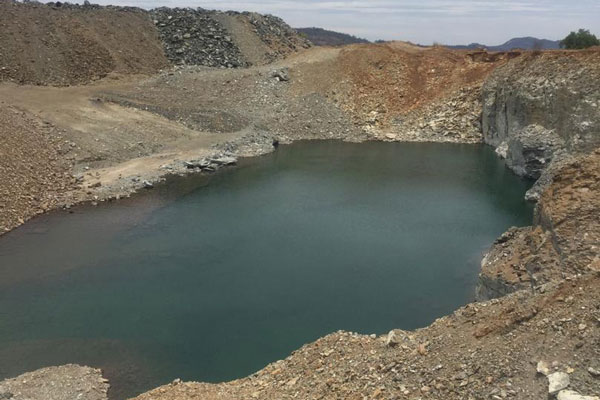
ENVIROMENT REPORTER
There are many drivers of land degradation in Zimbabwe, which include deforestation, veld fires, unsustainable farming practices and sand mining. Sand mining is emerging as one of the major drivers to land degradation in urban, semi-urban and rural service centres centre as well as growth points, mainly due to construction activities. For thousands of years, sand and gravel have been used in the construction of roads and buildings.
In as much as sand mining is an essential component of the construction industry, it has to be done in a sustainable manner, ensuring that future generations will enjoy the same benefits from the environment. This involves mining from designated sites, and rehabilitating the land afterwards. If these aspects are adhered to it means that the environment will not be degraded with huge open pits which are a death trap to human beings and animals.
Impacts of sand mining
Unsustainable extraction of sand and clay results in the following:
lLand degradation.
lAbandoned pits are life threatening to humans and animals, both wild and domestic as they have acted as death traps.
lThe open pits collect water resulting in the creation of breeding sites for carriers of disease causing organisms such as mosquitoes.
- Chamisa under fire over US$120K donation
- Mavhunga puts DeMbare into Chibuku quarterfinals
- Pension funds bet on Cabora Bassa oilfields
- Councils defy govt fire tender directive
Keep Reading
lLoosens the bed and banks of public rivers leading to siltation.
lDestruction of agricultural land thereby threatening livelihoods and food security.
What does the law say?
According to Statutory Instrument 7 of 2007 (EIA and Ecosystem Protection Regulations):
“No person shall excavate, remove, possess or licence the removal of clay or sand deposit for commercial purposes without a licence by the agency.”
The extraction of sand should be carefully monitored in order to prevent land degradation that may ravage the aesthetic value for the environment. Ecosystems protection is everyone’s responsibility; therefore, anyone who wishes to excavate sand or clay should apply for a licence from the agency. The applicant must first consult the local authority for a designated piece of land from where the extraction can be done. The local inspectors together with the applicant then come up with a detailed excavation and environmental rehabilitation/management plan for the site for consideration by the agency before extraction.
There are two types of licences;
lSand extraction licence.
lSand transportation licence.
Sand extraction licence
The applicant completes an application form available on the agency’s website (www.ema.co.zw) or at your nearest EMA office. The form should be endorsed by the local authority, lessee or land owner. A standard extraction point should measure 20×20 metres for sand extraction and an environmental management plan should be produced and submitted to any EMA office together with the completed application form. A nominal quarterly fee is paid by the applicant per extraction point for licence renewal.
Sand transporters licence
The sand transporter completes an application form and submits it together with copies of:
lCertificate of fitness of the vehicle.
lVehicle registration book.
lNational identity card of the vehicle owner.
lCertificate of incorporation for companies.
The sand transportation license is renewed quarterly for a nominal fee per truck.
Review process
After the submission for the application, the director-general may consider the application or may require further information desirable for sustainable utilization of the resources before a licence can be issued or rejected. However, if the applicant has been granted the certificate and has failed to comply with the stipulated requirements of the environmental rehabilitation plan the agency may cancel the certificate. In addition, anyone who contravenes the law shall be liable to a fine not exceeding level 14 or imprisonment for a period not exceeding five years or both.
lEnvironmental facts, tips and updates are published weekly by the Environmental Management Agency. Send your feedback to: [email protected], like us on Facebook:
Environmental Management Agency and Twitter: @EMAeep or visit our website www.ema.co.zw. Alternatively, call us on: Tel 086 77006244 and Toll-free 08080028; or use our WhatsApp platform 0779565707. We are ready to listen.











